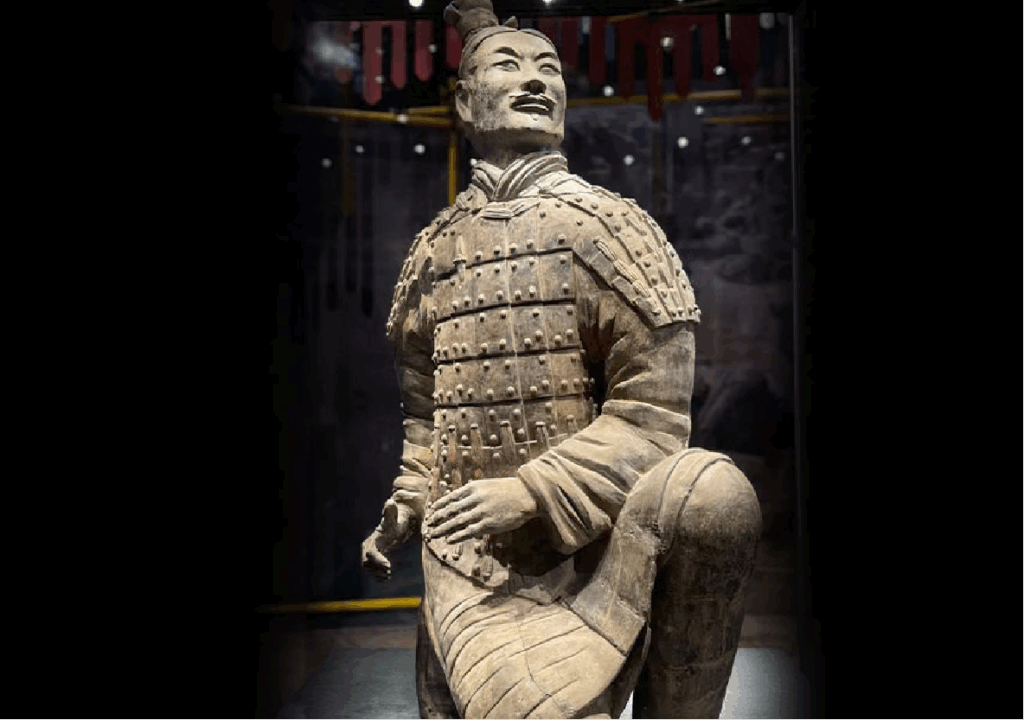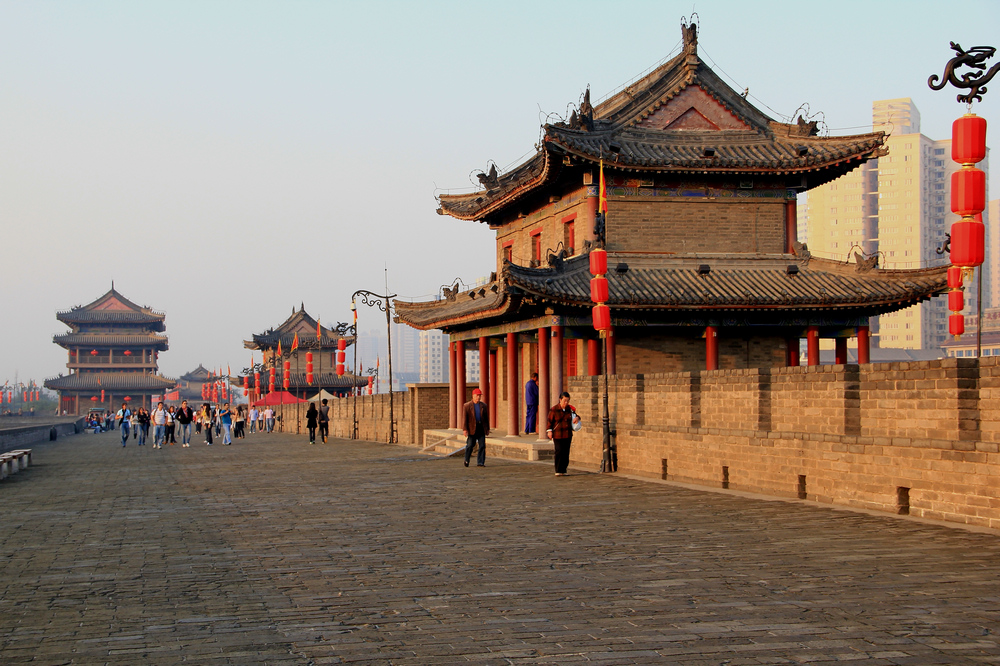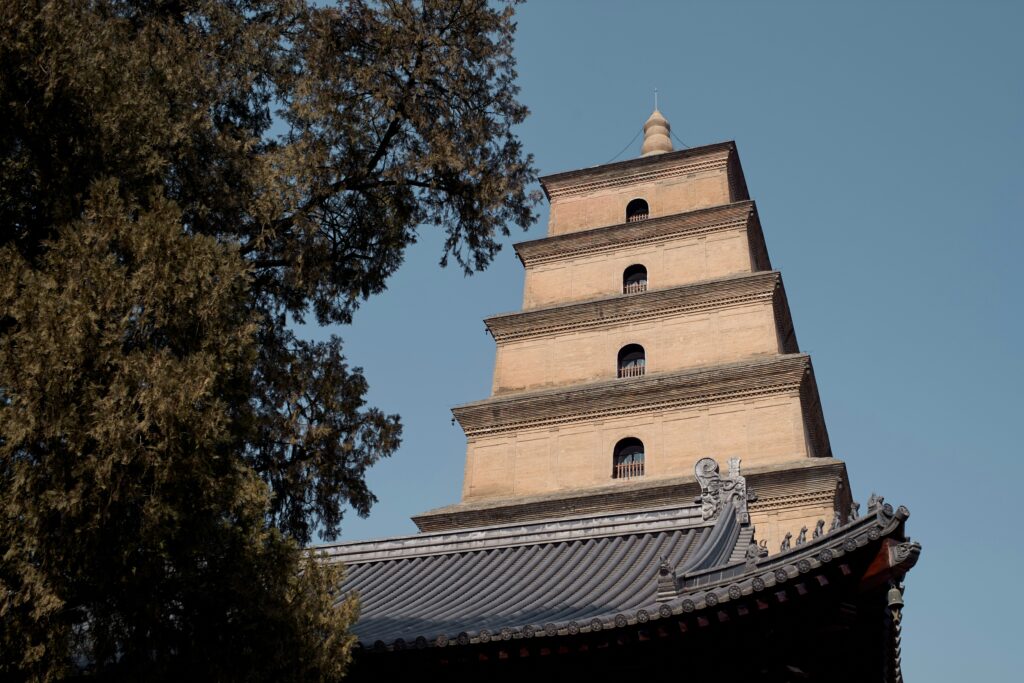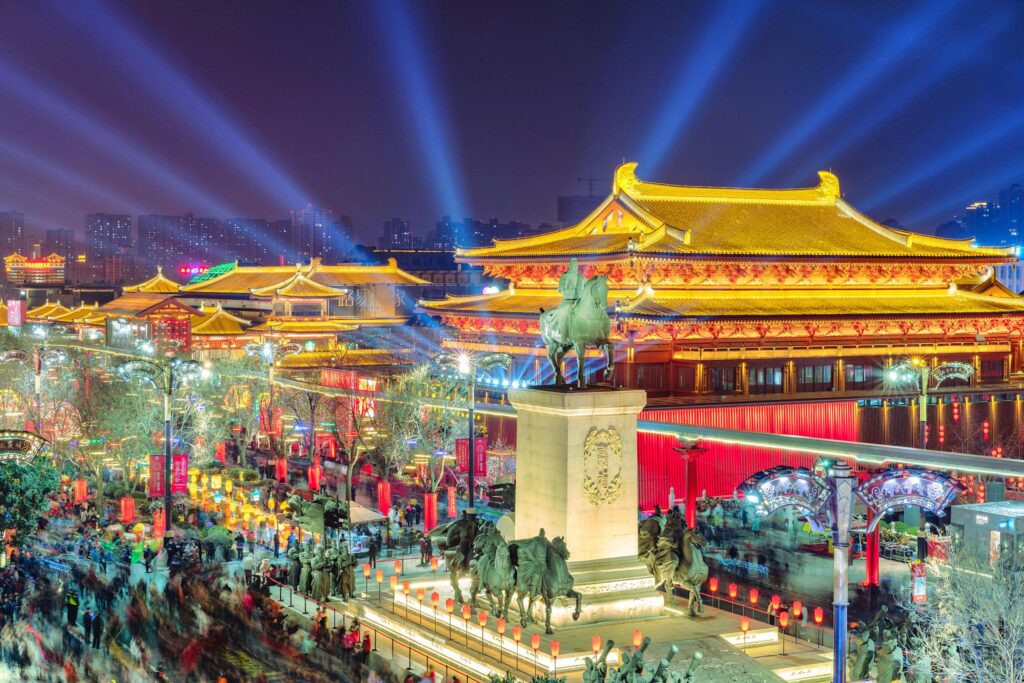Ancient capital of a thousand years, famous for the Terracotta Warriors and the history of the Silk Road, surrounded by city walls in full splendor.

Terra Cotta Warriors
The Terracotta Army is a remarkable archaeological site located in the suburbs of Xi’an, the capital of Shaanxi province in northwestern China. This vast, underground mausoleum was constructed over 2,200 years ago to guard the tomb of China’s first emperor, Qin Shi Huang. The Terracotta Army consists of thousands of life-size, individually sculpted clay soldiers, horses, and chariots, arranged in battle formation and buried with the emperor to protect him in the afterlife. The site has been designated a UNESCO World Heritage Site and is considered one of the most significant archaeological discoveries of the 20th century. A visit to the Terracotta Army is a must-do experience for anyone interested in Chinese history, art, and culture, offering a unique and awe-inspiring glimpse into the legacy of the Qin dynasty and the enduring power of ancient craftsmanship.
The City Wall
At 12 meters high and 15 meters wide, the 14-kilometer-long Xi’an City Wall is the most complete ancient city wall in China. It’s also the most dramatic place to view one of China’s most fascinating cities. Built in the Ming Dynasty, with intricate drawbridges, towers and a moat, the wall was once one of the most impressive military defense systems in the world. It safeguarded a city where many Silk Road journeys began and 13 Chinese dynasties had their capital. Now, the wall stands between modern Xi’an and the old city center. Inside the wall, the 36-square-kilometer old Xi’an comprises low, ancient buildings. No skyscrapers are allowed inside the city wall. Landmarks such as the Bell and Drum Towers and Muslim Quarter are located within. Bike tours atop the wall have become popular with locals and tourists.


The Big Wild Goose Pagoda
The Big Wild Goose Pagoda is an iconic landmark in Xi’an, known for its distinctive multi-tiered brick structure and its profound historical andcultural significance. Constructed in the 7th century during the Tang Dynasty, this magnificent pagoda stands as a testament to China’s rich buddhist heritage and the enduring legacy of the Tang capital. Rising over 200 feet into the sky, the Big Wild Goose Pagoda is a striking example of traditional Chinese Buddhist architecture, with its slender, tapering design and ornate, decorative elements. Visitors can climb to the top of the pagoda, offering stunning panoramic views of thesurrounding Daci’en Temple and the vibrant city of Xi’an beyond. Whether you’re marveling at its majestic silhouette, exploring the temple’s serene courtyards, or climbing to the top fora breathtaking view, the Big Wild Goose Pagoda is a must-visit destination for anyone exploring the cultural wonders of Xi’an.
Grand Tang City
Designed to immerse visitors in the sights, sounds, and experiences of the Tang era, Grand Tang City features a diverse array of attractions and experiences, a sprawling reproduction of the ancient imperial palace that once stood at the heart of Chang’an, the capital city during the Tang Dynasty. Visitors can explore the elaborately decorated palace halls, pavilions, and gardens, and witness captivating cultural performances that bring the Tang era to life. The complex also offers opportunities for visitors to immerse themselves in traditional Chinese crafts, such as calligraphy, pottery, and silk weaving. As a major cultural and tourism hub in Xi’an, Grand Tang City has become a popular destination for both domestic and international visitors, offering a unique and immersive experience that transports them back to the splendor and sophistication of the Tang Dynasty. The project’s ambitious scale and attention to historical authenticity make it a must-see attraction for anyone exploring the rich cultural heritage of Xi’an and China.


